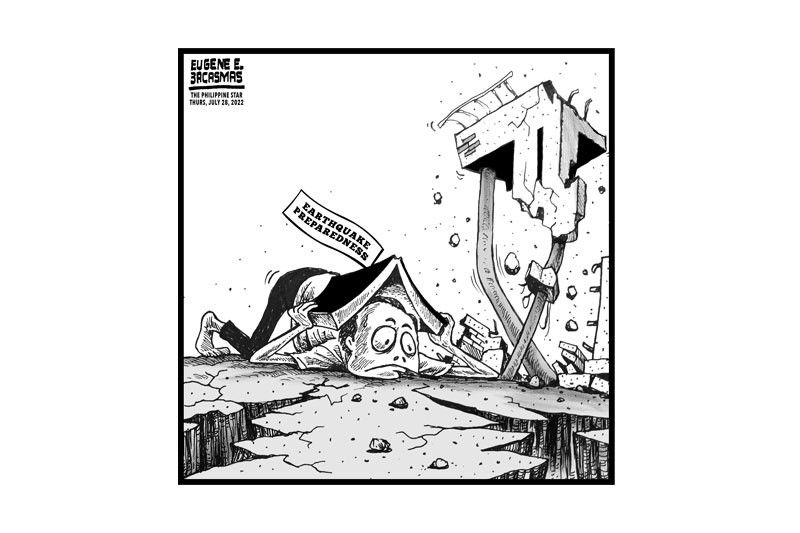EDITORIAL - Earthquake resilience

On July 16, 1990, a magnitude 7.7 earthquake struck Northern and Central Luzon including Metro Manila. The death toll was placed at 2,412, and the damage to public works infrastructure and buildings was placed at $369 million. Liquefaction swallowed up buildings and damaged roads.
The Hyatt Terraces Plaza in Baguio crumpled like an accordion. The quake struck at 4:26 p.m., when children were still in school and workers still in offices. In Cabanatuan City, Nueva Ecija, near the epicenter of the quake, the six-story building housing the Christian College of the Philippines collapsed. Of the 250 students and teachers in the building, 154 did not survive.
Almost to the day 22 years later, a magnitude 7.0 earthquake rocked Northern Luzon yesterday, this time with Abra as the epicenter. As of late yesterday afternoon, the death toll stood at five. People must be building for earthquake resilience; damage to houses, offices and public works was far less than in the 1990 quake. Heritage houses in Vigan, Ilocos Sur and old churches, however, were damaged.
In the National Capital Region, no damage was reported. But the powerful earthquake revives warnings about the NCR being ripe for the “Big One” – a 7.2 magnitude quake from the 100-kilometer-long West Valley Fault. An earthquake impact reduction study released in 2015 warned that such a quake could leave 34,000 people dead within an hour of the quake, mostly from the collapse of 170,000 houses and damage to 10 percent of public buildings.
The study, conducted by the Philippine Institute of Volcanology and Seismology together with the Metropolitan Manila Development Authority and Japan International Cooperation Agency, estimated massive damage to water distribution pipes, electric and telecommunication cables. Fires are expected to spread and the NCR will be cut off from supply lines. Further damage will be caused by thousands of aftershocks that can last for over a week.
Since the 1990 earthquake, measures have been undertaken nationwide to improve preparedness against the temblors as well as volcanic eruptions that regularly hit countries like the Philippines that sit along the Pacific Ring of Fire. But there is always room for further improvement. Phivolcs has not lacked in warnings. Science has not devised a way of predicting earthquakes, but heightened preparedness can minimize the death and destruction.
- Latest
- Trending


























